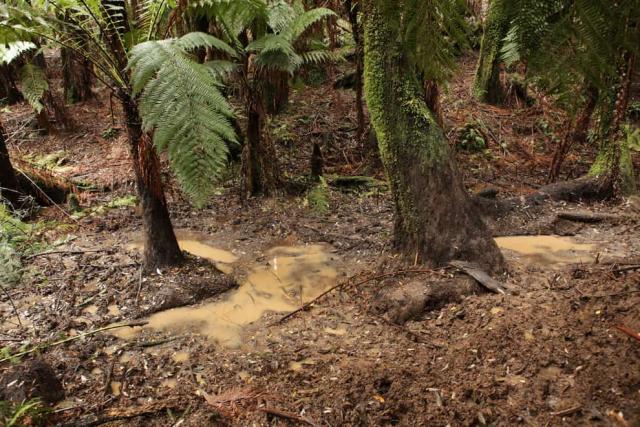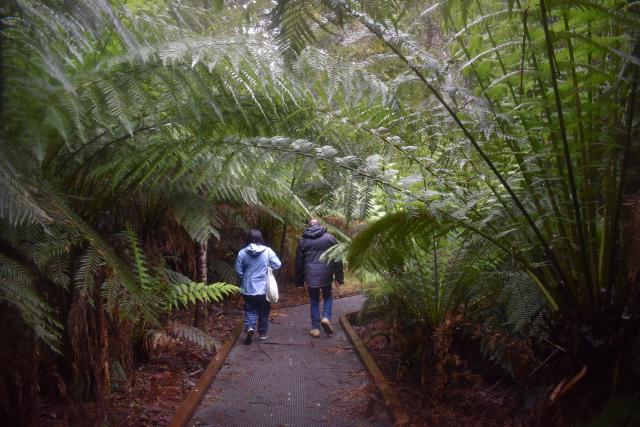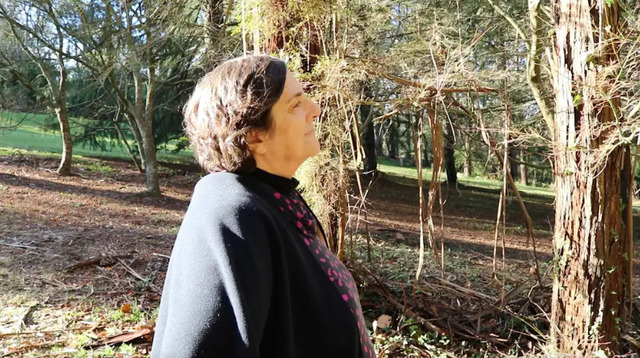Groups have welcomed the introduction of the federal government’s new deer management plan, but are calling for more action to be taken to eradicate the “feral species”.
The National Deer Action Plan, released on Monday 14 August, sets out 22 actions to reduce the impacts of feral deer on the environment, agriculture and communities.
In recent years, deer have become a growing threat to Australia’s primary industries, natural environments and community values as their population continues to expand; most prominently in eastern Victoria.
Cardinia Deer Management Coalition member Johannes Wenzel said even under the state government’s Peri-urban Deer Control Program, only relatively small areas of Parks Victoria’s land have undergone culling activities.
“Significant areas where threatened native species flora and fauna and communities are impacted by feral deer are missing out most likely because of insufficient funding,” Mr Wenzel said.
The National Deer Action Plan was developed by a working group and supported by the National Feral Deer Management Coordinator, in partnership and consultation with stakeholders across Australia.
One of these groups was the Cardinia Deer Management Coalition, which submitted suggestions during the consultation process for the plan.
“[The plan] highlights the need of landscape scale, cross-tenure feral deer control with at least 35-50 per cent of deer to be removed to just keep the numbers at a steady level or better more to achieve a reduction,” Mr Wenzel said.
“Another big problem is the fact that nobody knows the number of the feral deer population in the Dandenong Ranges and therefore it is impossible to establish a 35 per cent or 50 per cent [decrease].”
In 2021, the Cardinia Deer Management Coalition conducted an aerial thermal helicopter survey of feral deer over 110 square kilometres between Emerald in the north, Harkaway in the South, Menzies Creek in the west and Mt Burnett in the East, and identified a density of 15 deer per square kilometre and an abundance of 1695, plus or minus 324 deer in the area.
There have also been recent reports of property damage as a result of deer invading residences and car accidents caused as a result of the species infiltrating main arterial roads in the Dandenongs and Yarra Valley.
“Hopefully public and private land managers, mainly the Department of Environment, Energy and Climate Action (DEECA, previously DELWP), Parks Victoria and Melbourne Water will follow that recommendation,” Mr Wenzel said.
“It is important to realise that deer control has been sadly neglected and underfunded for many years. Under stewardship of those agencies deer numbers have increased dramatically over the last 10 to 15 years.”
The Invasive Species Council of Australia has also welcomed the plan, but warned that feral deer are on track to spread across the whole country and “severely damage’ world heritage areas unless significant funding is also committed by the federal government.
“This plan should be a wake-up call for the Victorian and Tasmanian governments, where deer are still legally protected as a game animal, reflecting an outdated attitude to a serious invasive species,” Invasive Species Council officer in Victoria Peter Jacobs said.
“Feral deer overgraze and trample native grasslands and ring-bark native shrubs and trees. They cause erosion and degrade water quality by wallowing in wetlands and streams, impacting the homes of native species like the platypus.
“As deer spread into urban areas, including around Sydney, Canberra, Melbourne and Brisbane, they are threatening the lives of motorists, destroying gardens, contaminating critical water catchments and damaging the few remaining patches of urban bushland.”
Minister for Agriculture, Fisheries and Forestry, Senator Murray Watt and Minister for the Environment and Water, Tanya Plibersek, issued a joint media release on Monday announcing the plan.
“Feral deer numbers have exploded from 50,000 in 1980 to between one and two million, today. They are the ‘next rabbit’ of Australia’s feral species,” Ms Plibersek said.
“The National Feral Deer Action Plan will develop and trial new tools, to build capacity to detect, cull and prevent further spread of this feral pest.
“Feral deer do enormous damage to our native wildlife and precious places – they kill threatened species and damage critical habitat.
Ms Plibersek said the government is committed to “protecting our precious species” and leaving nature “better off for our kids and grandkids”.
“Feral deer are estimated to cost Australian communities and primary producers $91 million a year, they cause extensive environmental damage, spread disease, and are increasingly becoming a traffic hazard.”
Minister Watt thanked the National Deer Management Coordinator, Dr Annelise Wiebkin, from Department of Primary Industries and Regions in South Australia, who together with a working group, delivered the plan.
“The Albanese Government understands the importance of managing feral animals in Australia to protect our agricultural industries and the environment,” he said.
“That’s why in June I announced almost $1 million in funding to extend the national feral deer management coordinator program for another two years to help deliver the Plan.
“This builds on over $4 million invested in deer control projects through my department.”
Mr Watt said many dedicated stakeholders are working together to tackle the challenges of feral deer.
“Managing feral deer is a shared responsibility between landholders, community, industry, and government—and under the Albanese Government we continue to do our share, supporting you to get the job done.”
Mr Wenzel said the national deer control plan is a “brilliant opportunity” to raise public awareness.
“Yarra Ranges Council received some funding from the peri-urban deer management project and is delivering a pilot deer control program in the Yellingbo area to protect the remaining habitat for the Helmeted Honeyeater and the lowland Leadbeater’s Possum,” he said.
For more information on the plan, visit https://feraldeerplan.org.au/







